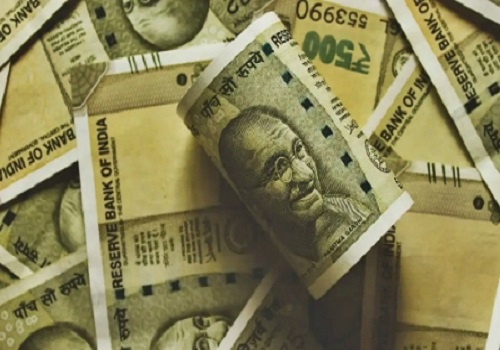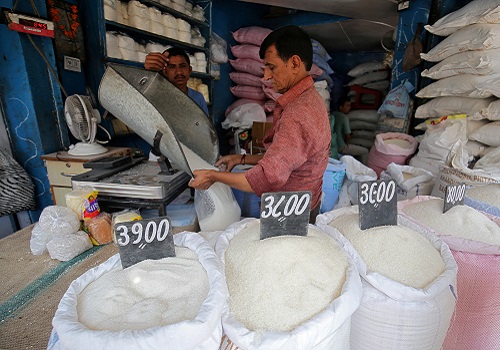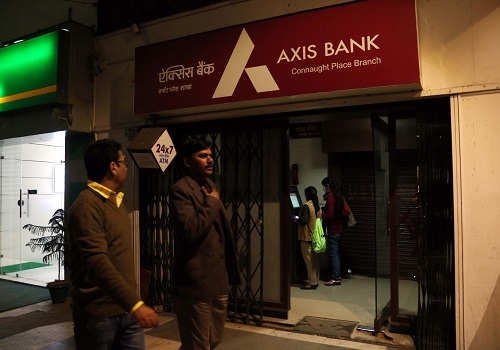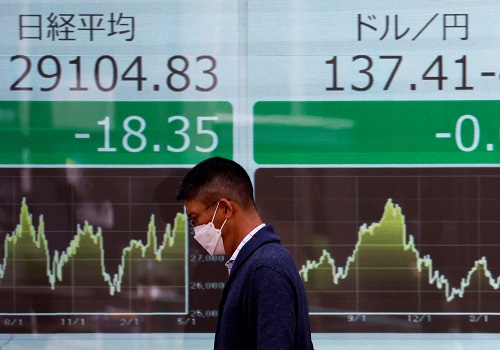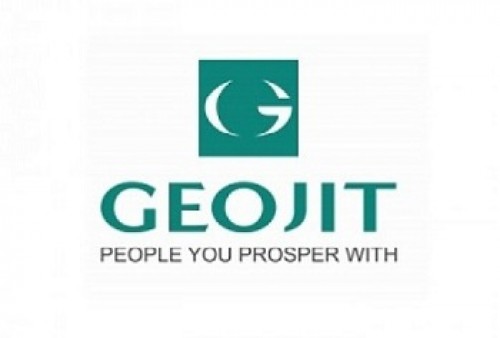Jeera trading range for the day is 14280-14800 - Kedia Advisory

Follow us Now on Telegram ! Get daily 10 - 12 important updates on Business, Finance and Investment. Join our Telegram Channel
Gold
Gold yesterday settled up by 0.82% at 46887 as a weaker dollar offset bets that the U.S. Federal Reserve could begin tapering its pandemic-era asset purchases soon. The U.S. Federal Reserve may be close to meeting the inflation mandate set for raising interest rates, Philadelphia Fed Bank President Patrick Harker said, but it may be a year or longer before the central bank's employment goal is met to allow for an actual rate increase. The Fed's conditions for raising interest rates could be met by the end-2022, Cleveland Fed Bank President Loretta Mester said, adding, she expects inflation to come back down to the central bank's target next year. Demand for physical gold also picked up in top consumer China last week and there was increased activity in other Asian hubs including Singapore. Speculators cut net long positions by 19,471 contracts to 42,123 in the week to Sept. 28, data from the U.S. Commodity Futures Trading Commission (CFTC) showed. India's gold imports in September soared 658% from last year's lower base as a correction in local prices to the lowest level in nearly six months prompted jewellers to step up purchases for the upcoming festive season. India imported 91 tonnes of gold in September, compared to 12 tonnes a year earlier. Technically market is under fresh buying as market has witnessed gain in open interest by 1.27% to settled at 13534 while prices up 381 rupees, now Gold is getting support at 46497 and below same could see a test of 46108 levels, and resistance is now likely to be seen at 47119, a move above could see prices testing 47352.
Trading Ideas:
Gold trading range for the day is 46571-47603.
Gold rallied as the dollar took a breather after U.S. jobs data came in well below expectations
U.S. job growth slows sharply in September
Fed's Mester says U.S. inflation mostly driven by pandemic-related factors
Silver
Silver yesterday settled up by 0.67% at 60953 amid concerns over a slowing global growth and the broader economic impact of Chinese property developer Evergrande's debt crisis. New orders for U.S.-made goods accelerated in August, pointing to sustained strength in manufacturing even as economic growth appeared to have slowed in the third quarter because of shortages of raw materials and labor. The Commerce Department said on Monday that factory orders increased 1.2% in August. Data for July was revised higher to show orders rising 0.7% in July instead of gaining 0.4% as previously reported. Investors now await the US jobs report due on Friday, which is expected to show an increase of 460 thousand in non-farm payrolls and could influence the Federal Reserve's timeline for tapering its asset purchases. Investors fear that supply chain disruptions across the globe could keep inflation higher for a longer period than thought. Evergrande missed two deadlines to pay more than $180 million in interest to foreign investors who hold its dollar-denominated bonds. In her Congressional testimony, Treasury Secretary Janet Yellen has warned of "catastrophic economic consequences" if the debt ceiling is not raised by October 18th. The U.S. Federal Reserve may be close to meeting the inflation mandate set for raising interest rates, Philadelphia Fed Bank President Patrick Harker said. Technically market is under short covering as market has witnessed drop in open interest by -4.39% to settled at 11370 while prices up 403 rupees, now Silver is getting support at 60292 and below same could see a test of 59631 levels, and resistance is now likely to be seen at 61392, a move above could see prices testing 61831.
Trading Ideas:
Silver trading range for the day is 60008-63604.
Silver gained as markets digested a lower-than-expected increase in U.S. Nonfarm Payrolls
The US economy added 194 thousand jobs in September, the least so far this year
The U.S. debt ceiling concerns receded after Senate approved a legislation to raise the debt limit by $480 billion
Crude oil
Crude oil yesterday settled up by 3.72% at 5825 as OPEC and its allies agreed to stick to their existing agreement to add 400,000 barrels per day (bpd) of oil to the market in November, despite pressure from consumers to cool a red hot market. Ministers from the Organization of the Petroleum Exporting Countries, Russia and their allies, known as OPEC+, gathered online to discuss oil policy. Russian Deputy Prime Minister Alexander Novak on Monday said that the decision by the OPEC+ group of leading oil producers to increase their combined output by 400,000 barrels per day (bpd) in November will help to stabilise the market. Kazakhstan's oil production quota under the global OPEC and non-OPEC producers' pact has been set at 1.524 million barrels per day for October, the Kazakh energy ministry said, and will increase by about 16,000 bpd every month. The ministry confirmed that the group has agreed to stick to its plan of adding 400,000 bpd per month to global crude supply. Money managers raised their net long U.S. crude futures and options positions in the week to September 28, the U.S. Commodity Futures Trading Commission (CFTC) said. Technically market is under fresh buying as market has witnessed gain in open interest by 33.4% to settled at 11667 while prices up 209 rupees, now Crude oil is getting support at 5674 and below same could see a test of 5522 levels, and resistance is now likely to be seen at 5905, a move above could see prices testing 5984.
Trading Ideas:
Crude oil trading range for the day is 5812-6078.
Crude oil rose buoyed by a global energy crunch that has helped gas prices to record highs and prompted China to demand increased coal production.
The price run-up has been spurred by soaring European gas prices, which have encouraged a switch to oil for power generation
Energy markets have tightened in the face of improved fuel demand as economic activity rebounds and coronavirus restrictions ease
Natural gas
Nat.Gas yesterday settled up by 3.48% at 433.7 on forecasts power generators will burn more of the fuel this week than previously expected and as record global gas prices keep demand for more U.S. liquefied natural gas (LNG) exports strong. Even though the weather is expected to remain milder than normal on average across the United States through mid October, lingering pockets of warm were still expected to keep air conditioners humming in some parts of the country this week. Gas prices around the world have soared to all-time highs for several days in a row as low stockpiles in Europe and insatiable demand in Asia cause the two regions to compete for spare LNG cargoes. Prices in Europe jumped over 80% in September, rising a seventh month in a row, as the amount of gas in storage in some European countries fell to dangerously low levels ahead of the winter heating season. Speculators boosted their net long positions on the New York Mercantile and Intercontinental Exchanges last week for the first time in three weeks as record global prices helped the U.S. front-month climb over 9% in volatile trade, according to data from the Commodity Futures Trading Commission (CFTC). Technically market is under fresh buying as market has witnessed gain in open interest by 10.07% to settled at 5934 while prices up 14.6 rupees, now Natural gas is getting support at 419.9 and below same could see a test of 406 levels, and resistance is now likely to be seen at 449.5, a move above could see prices testing 465.2.
Trading Ideas:
Natural gas trading range for the day is 405.3-450.3.
Natural gas prices dropped amid forecasts for mild weather and low heating demand through late October.
Pressure also mounting with U.S. gas production rising and heating demand expected to remain low for the rest of the month.
However downside seen limited amid expectations that insatiable global demand for the fuel would keep U.S.
Copper
Copper yesterday settled up by 1.53% at 719.2 as the US dollar fell and amid concerns over power outages in China. Large areas in China have seen frequent power outages, which raised concerns about slowing economic growth, but China's Premier Li Keqiang said last week that the country will secure its energy needs while continuing its economic activity. Chinese data showed that warehouse stocks fell to the lowest level since June 2009 at 43,525 tonnes, and LME warehouse stocks fell to 217,175 tonnes, or by 14% last month. Global copper smelting activity rebounded in September as higher treatment charges spurred many smelters to increase output, data from satellite surveillance showed. Copper processing rose worldwide despite declines in top producer China and in the United States, satellite service SAVANT and broker Marex said in a statement. Spot treatment and refining charges (TC/RCs) in top copper consumer China have surged some 45% over the last three months and are set for their biggest quarterly gain since the first quarter of 2011. Technically market is under short covering as market has witnessed drop in open interest by -11.36% to settled at 3675 while prices up 10.85 rupees, now Copper is getting support at 710.5 and below same could see a test of 701.7 levels, and resistance is now likely to be seen at 726, a move above could see prices testing 732.7.
Trading Ideas:
Copper trading range for the day is 717.3-737.7.
Copper rose helped by upbeat sentiment in global equities, as the United States moved closer to resolving its debt-ceiling wrangles.
Chile copper exports rise in September on high prices
The People's Bank of China injected a total CNY 10 billion of seven-day reverse repos at an interest rate of 2.2 percent on October 8th 2021
Zinc
Zinc yesterday settled up by 1.48% at 256.85 as support seen after Mitsui Mining and Smelting Co Ltd , Japan's biggest zinc smelter, plans to produce 113,200 tonnes of refined zinc in the second half of the 2021/22 financial year to March 31, down 2.2% year on year, it said. Toho Zinc Co Ltd, Japan's third-biggest zinc smelter, plans to produce 47,800 tonnes of refined zinc in the second half of the 2021/22 financial year, up 1.9% from a year earlier, it said. Total zinc inventories across seven Chinese markets stood at 119,800 mt as of September 30, down 11,500 mt from September 27 and 9,400 mt from September 24. The inventory in Shanghai declined sharply amid increasing pre-holiday restocking by downstream plants. Guangdong saw a decrease in stocks as maintenance at smelters affected the shipments and downstream producers still have pre-holiday restocking demand. The global zinc market deficit narrowed to 6,600 tonnes in July from a revised deficit of 40,000 tonnes in June, data from the International Lead and Zinc Study Group (ILZSG) showed. Japan’s industrial output fell for the second straight month in August as COVID-19 outbreaks elsewhere in Asia disrupted supply chains for carmakers already facing headwinds from a prolonged chip shortage. Technically market is under fresh buying as market has witnessed gain in open interest by 6.14% to settled at 1261 while prices up 3.75 rupees, now Zinc is getting support at 254.7 and below same could see a test of 252.5 levels, and resistance is now likely to be seen at 258.2, a move above could see prices testing 259.5.
Trading Ideas:
Zinc trading range for the day is 256.9-276.3.
Zinc prices gained as activity in China’s services sector returned to growth in September
Japan's Mitsui Mining expects 2.2% drop in H2 zinc output
Total zinc inventories across seven Chinese markets stood at 133,800 mt as of October 8, up 14,000 mt from September 30
Nickel
Nickel yesterday settled up by 1.01% at 1398.3 as new orders for U.S.-made goods accelerated in August, pointing to sustained strength in manufacturing even as economic growth appeared to have slowed in the third quarter because of shortages of raw materials and labor. The Commerce Department said that factory orders increased 1.2% in August. Data for July was revised higher to show orders rising 0.7% in July instead of gaining 0.4% as previously reported. The difference between LME cash nickel and the three-month contract flipped to a discount of $1 a tonne after staying in premium since Aug. 25, indicating easing tightness in nearby inventories. Companies have cut output due to the impact of the domestic power rationing, leading to weak downstream stockpiling before the holidays. The SHFE/LME nickel price ratio inched lower from highs early last week, but rallied amid low inventory and market concerns over further inventory declines amid low prices. Nickel ore inventory at Chinese ports grew 143,000 wmt from a week earlier to 7.49 million wmt as of September 30. Total Ni content stood at 58,800 mt. Total inventory at seven major ports stood at around 3.68 million wmt, a decline of 37,000 wmt from Friday September 24. Technically market is under short covering as market has witnessed drop in open interest by -12.48% to settled at 1956 while prices up 14 rupees, now Nickel is getting support at 1387.6 and below same could see a test of 1377 levels, and resistance is now likely to be seen at 1405.9, a move above could see prices testing 1413.6.
Trading Ideas:
Nickel trading range for the day is 1435.8-1531.
Nickel prices rose as the demand for nickel recovered amid easing power rationing policies
The implicit balance in the global nickel market is forecast to move to a surplus of 76,000 tonnes in 2022 from a deficit of 134,000 tonnes in 2021
The Senate voted to extend US debt limit to US$480 billion through early December after Democrats and Republicans reached a deal to avert economic disaster.
Aluminium
Aluminium yesterday settled up by 2.17% at 232.85 boosted by strong demand and large shortages created by China imposing production curbs on high-polluting industries such as smelting to cut power use and emissions. A widespread power shortage in China has raised concerns of slower growth and demand as the government has focused on limiting use by energy-intensive industries to lessen the impact on households. Aluminium smelters can account for up to 7% of China's overall energy consumption, and up to 40% of the metal's production costs in China could be accounted for by power. The social inventories of aluminium and aluminium billet have been on the rise due to massive suspension of production across the downstream sector. An alumina refinery in Jamaica that was damaged by fire and shut down in August is not expected to be back at 100% production for another year, until the end of September 2022. On the fundamentals, the power shortage and energy consumption control has brought down the supply of aluminium. And the production costs of aluminium kept climbing amid rising prices of alumina and thermal coal. Meanwhile, the National Food and Strategic Reserves Administration has decided to release the fourth batch of national reserves with an amount of 70,000 mt of aluminium, forming resistance against aluminium prices. Technically market is under fresh buying as market has witnessed gain in open interest by 12.29% to settled at 402 while prices up 4.95 rupees, now Aluminium is getting support at 230 and below same could see a test of 227.1 levels, and resistance is now likely to be seen at 234.4, a move above could see prices testing 235.9.
Trading Ideas:
Aluminium trading range for the day is 233.2-242.4.
Aluminium gained as due to the impact of power rationing on aluminium foil production in Jiangsu and Zhejiang.
Sentiments remain firm as the recovery of aluminium supply will be slow, while aluminium consumption is more resilient.
Prices recently boosted by strong demand and large shortages created by China imposing production curbs on high-polluting industries
Mentha oil
Mentha oil yesterday settled down by -0.59% at 917.3 as demand from consumer side is extremely weak and industrial demand is also not picking up as industries are now finding fixed price of mentha from synthetic mentha. Major physical market player expects demand to sluggish for next few week as cash crunch seen in spot market, while expectations are high about demand improvement ahead of winter season starts. China is one of the biggest buyer for Indian Mentha, no much buying inquiry from China as mainland China and Hong Kong markets were shut. Speculation are also high that production this year will be lower as compare with last year because of two important factors. Firstly damages due to rain in key area and secondly farmers for the last 2 years where sowing mentha but due to not getting much profit at intervals there had been shift to other crops also. There is a possibility of an average reduction of 24-25 percent in the production of the total summer crop, the farmers said that the mentha crop which used to have a recovery of 8 to 10 kg oil per hectare, is now coming out only 6 kg. In Sambhal spot market, Mentha oil gained by 28.6 Rupees to end at 1056 Rupees per 360 kgs.Technically market is under long liquidation as market has witnessed drop in open interest by -0.39% to settled at 1281 while prices down -5.4 rupees, now Mentha oil is getting support at 915.1 and below same could see a test of 912.8 levels, and resistance is now likely to be seen at 921.1, a move above could see prices testing 924.8.
Trading Ideas:
Mentha oil trading range for the day is 929.3-955.1.
In Sambhal spot market, Mentha oil dropped by -5.2 Rupees to end at 1059.8 Rupees per 360 kgs.
Mentha oil prices remained supported as support seen after India saw a slight in fresh Covid cases, with unlockdown ahead of festival season.
Prices got support in last few weeks as due to crop failure and low recovery of oil
Availability of Mentha oil will be low and demand from industries are expected to improve ahead of winter season.
Soyabean
Soyabean yesterday settled up by 1.48% at 5558 on short covering after prices seen pressure as higher U.S. stocks weighed on the market. Prices fell on pressure from larger-than-expected stocks reported on Thursday by the U.S. Department of Agriculture (USDA). There was additional pressure stemming from the ongoing U.S. harvest. The USDA reported Sept. 1 soybean stocks at 256 million bushels, above the entire range of trade estimates. The USDA said U.S. processors crushed 168.2 million bushels of soybeans in August, below an average of trade estimates for 169.0 million. The Commodity Futures Trading Commission's weekly commitments of traders report also showed that noncommercial traders, a category that includes hedge funds, raised their net-long position in soybeans. India's soybean production is estimated to be 10 million tonnes as compared to last year's 8.9 million tonnes. New season soybean has started arriving in the mandis and bulk buyers are cautious for aggressive buying before the arrival pressure builds up. Pressure also seen following a U.S. government report that showed larger-than-expected soybean inventory. U.S. Department of Agriculture said that Sept. 1 soybean stocks stood at 256 million bushels, down 51% from a year earlier but above a range of expectations. At the Indore spot market in top producer MP, soybean gained 132 Rupees to 5342 Rupees per 100 kgs.Technically market is under short covering as market has witnessed drop in open interest by -4.37% to settled at while prices up 81 rupees, now Soyabean is getting support at 5422 and below same could see a test of 5287 levels, and resistance is now likely to be seen at 5645, a move above could see prices testing 5733.
Trading Ideas:
Soyabean trading range for the day is 5426-5722.
Soyabean dropped on the expectation that soon arrival will hit mandi.
However downside seen limited on the news of damages due to rain in key sowing area.
The average soybean production estimate was 4.415 billion bushels, up from USDA's September view of 4.374 billion. The
At the Indore spot market in top producer MP, soybean gained 68 Rupees to 5760 Rupees per 100 kgs.
Ref.Soyaoil
Ref.Soyaoil yesterday settled up by 0.43% at 1328.2 on short covering after prices dropped as import of edible oil has increased due to reduction in duty, which creating pressure on prices. Oilseeds output is also expected to be down a tad at 23.38 mt as soyabean production was affected by the patchy rains in the key producing States of Gujarat and Madhya Pradesh, respectively. Favorable weather over the weekend boosted U.S. harvest, while exports remain capped by terminals on the U.S. Gulf Coast that continue to struggle with power outages and hurricane-led damage as the country heads into its busiest export season. India's vegetable oil imports are likely to contract for the second straight year, the Solvent Extractors' Association of India (SEA) said. Imports in 2020/21 marketing year ending Oct. 31 could fall to 13.1 million tonnes, the lowest in six years, from last year's 13.2 million, B.V. Mehta, SEA executive director, said in a virtual conference. India's export of oilmeal, used as animal feed, declined 4 percent to 1,64,831 tonne in August from the year-ago period, in view of domestic shortage of the key oilmeal products. At the Indore spot market in Madhya Pradesh, soyoil was steady at 1334.2 Rupees per 10 kgs.Technically market is under short covering as market has witnessed drop in open interest by -1.89% to settled at while prices up 5.7 rupees, now Ref.Soya oil is getting support at 1321 and below same could see a test of 1313 levels, and resistance is now likely to be seen at 1334, a move above could see prices testing 1339.
Trading Ideas:
Ref.Soya oil trading range for the day is 1303-1341.
Ref soyoil prices dropped as import of edible oil has increased due to reduction in duty
Oilseeds output is also expected to be down a tad at 23.38 mt as soyabean production was affected.
India’s Sept edible oil stocks at ports and pipelines rose 3.24 percent mom: SEA
At the Indore spot market in Madhya Pradesh, soyoil was steady at 1362.1 Rupees per 10 kgs.
Crude palm Oil
Crude palm Oil yesterday settled up by 0.77% at 1135.4 as industry estimates of weaker September output amid a surge in exports raised concerns over a decline in inventories. The Southern Peninsula Palm Oil Millers' Association estimated production in September declined 2.3% from the month before. Exports of Malaysian palm oil products for September rose 43.2% to 1.7 million tonnes from August, cargo surveyor Societe Generale de Surveillance said. India's palm oil imports in September more than doubled from a year ago to a record 1.4 million tonnes as buyers increased purchases of refined palm oil ahead of key festivals and to take advantage of newly lowered duties. India's palm oil imports in September more than doubled from a year ago to a record 1.4 million tonnes as buyers increased purchases of refined palm oil ahead of key festivals and to take advantage of newly lowered duties. Higher purchases by India, the world's biggest buyer of vegetable oils, could support palm oil prices that are trading near a record high hit earlier this week. The country's total vegetable oil imports in September jumped 72% from a year ago to a record 1.8 million tonnes, including more than 400,000 tonnes of refined palm oil. In spot market, Crude palm oil gained by 0.6 Rupees to end at 1152.4 Rupees.Technically market is under fresh buying as market has witnessed gain in open interest by 2.74% to settled at 5359 while prices up 8.7 rupees, now CPO is getting support at 1127.2 and below same could see a test of 1119.1 levels, and resistance is now likely to be seen at 1141.3, a move above could see prices testing 1147.3.
Trading Ideas:
CPO trading range for the day is 1127.9-1169.9.
Crude palm oil gained underpinned by signs of slowing production and a recovery in rival soyoil prices.
Indonesia's August palm oil exports jump 59%
Southern Peninsula Palm Oil Millers' Association estimated Malaysia's production during Sept. 1-20 fell 4.5% from the same period in August.
In spot market, Crude palm oil gained by 13.3 Rupees to end at 1201.5 Rupees.
Turmeric
Turmeric yesterday settled down by -0.58% at 7200 amid prospects of better crop this kharif season along with tepid demand. However downside seen limited following export demand from Europe, Gulf countries and Bangladesh. The areas where turmeric has been sown have received adequate rainfall and are expected to produce well in the next season. Turmeric crops were severely damaged in Parbhani and Hingole due to heavy rains. India is on course to having a normal monsoon, which will recharge the country’s main water reservoirs just enough, and ensure that the most important crops for the kharif season have normal sowing. This is good news for agricultural production and food prices. Pressure also seen as the lockdown restrictions were eased the key Turmeric growing states, including Maharashtra and Telangana reported noticeable increase in mandi arrivals, which augmented physical market supplies and pressurized prices. In the first 7 months of 2021, turmeric exports declined by 16% to 90,133 tonnes compared to the same period last year, but nearly 10% higher than the 5-year average. There may be concerns about crop damage due to excess rain in major producing states due to Cyclone Gulab. In Nizamabad, a major spot market in AP, the price ended at 7112.5 Rupees dropped -6.2 Rupees.Technically market is under long liquidation as market has witnessed drop in open interest by -7.42% to settled at while prices down -42 rupees, now Turmeric is getting support at 7072 and below same could see a test of 6942 levels, and resistance is now likely to be seen at 7280, a move above could see prices testing 7358.
Trading Ideas:
Turmeric trading range for the day is 6992-7584.
Turmeric prices gained following export demand from Europe, Gulf countries and Bangladesh.
However upside seen limited amid prospects of better crop this kharif season along with tepid demand.
The areas where turmeric has been sown have received adequate rainfall and are expected to produce well.
In Nizamabad, a major spot market in AP, the price ended at 7111.85 Rupees dropped -13.15 Rupees.
Jeera
Jeera yesterday settled down by -1.24% at 14320 as the sowing of cumin seeds in Gujarat and Rajasthan may increase due to normal rains in the western region. In 2021 (January-July), the country has exported more than 1.75 lakh tonnes of cumin as compared to 1.67 lakh tonnes in the same period last year. Pressure also seen as adequate stock with traders and farmers may keeping prices under pressure at higher levels. However downside seen limited as the export of cumin is increasing continuously and in the coming days there are signs of increasing the export of cumin in a big way. In 2021 (January-June), the country has exported more than 1.50 lakh tonnes of cumin as compared to 1.3 lakh tonnes in the same period last year. Purchase of cumin seeds from African and Middle East countries will be diverted from other countries to India this year. Recent estimates state that cumin production has slumped by 60% in Iran’s Razavi Khorasan Province due to severe drought and unusually cold weather coupled with an early spring. Rainfall ranges 63% lower than last year this season so far. Extensive crop losses seen, the early onset of spring in February also caused serious damage to production. In Unjha, a key spot market in Gujarat, jeera edged up by 52.6 Rupees to end at 14328.55 Rupees per 100 kg.Technically market is under long liquidation as market has witnessed drop in open interest by -0.2% to settled at while prices down -180 rupees, now Jeera is getting support at 14220 and below same could see a test of 14120 levels, and resistance is now likely to be seen at 14425, a move above could see prices testing 14530.
Trading Ideas:
Jeera trading range for the day is 14280-14800.
Jeera dropped as adequate stock with traders and farmers may keeping prices under pressure at higher levels.
However downside seen limited as the export of cumin is increasing continuously and in the coming days there are signs of increasing the export of cumin
India's cumin exports will increase due to less supply from Afghanistan-Syrian
In Unjha, a key spot market in Gujarat, jeera edged down by -16.25 Rupees to end at 14240 Rupees per 100 kg.
Cotton
Cotton yesterday settled down by -1.84% at 28280 on profit bookinga after prices gained because of threat regarding significant crop damage in the affected areas, in addition to possibility of harvest delays. The pink bollworm attack has been discovered in Bathinda district’s cotton farms in Punjab. The harvest in Punjab shall begin by next week. The recent developments regarding pink bollworm infestations in Punjab, Haryana and heavy rains in Madhya Pradesh and Maharashtra have started raising doubts regarding this season’s crop size. In earlier forecasts, the US Department of Agriculture (USDA) and the Cotton Corporation of India (CCI) have come out with a better harvest versus previous year. Cotton is grown around 4.8 lakh hectares in the state of Punjab. Reports say that Sirsa, Fatehabad, Hisar, Mahendragarh, and Jind in Haryana, and Bathinda and Mansa in Punjab, are some of the districts affected by the pink bollworm infestation. The regions of Maharashtra and Madhya Pradesh are also reportedly affected adversely, from the heavy rains across the respective productive belts. The Haryana government directed all deputy commissioners to send reports regarding the recent damage to cotton crop due to heavy rains and waterlogging by October 15. In spot market, Cotton dropped by -70 Rupees to end at 27440 Rupees.Technically market is under fresh selling as market has witnessed gain in open interest by 2.14% to settled at 2194 while prices down -530 rupees, now Cotton is getting support at 27830 and below same could see a test of 27370 levels, and resistance is now likely to be seen at 28790, a move above could see prices testing 29290.
Trading Ideas:
Cotton trading range for the day is 30010-32010.
Cotton prices gained on the back of supply concerns and growing demand from top user China, which is filling needs mainly from the US and India.
Meanwhile, heavy rains are threatening crops in US growing regions, while a pest called pink bollworm is rapidly spreading across fields.
Unseasonal rains in growing areas are proving to be a blessing in disguise as they might help cotton farmers go in for third and fourth picking.
In spot market, Cotton gained by 260 Rupees to end at 28480 Rupees.
Views express by all participants are for information & academic purpose only. Kindly read disclaimer before referring below views. Click Here For Disclaimer







